2. The convivencia in Al-Andalus
Spain under Muslim domination, also known as Al-Andalus, was an area of contact between Muslim conquerors, Hispanic Christians and a Jewish community that had been present since Antiquity [see modules on Judaism I, section 2 and Judaism II, section 7]. Christians and Jews had the status of dhimmī [see module on Islam I, section 2], but the Umayyad period (756-1031) was the “golden age” of a harmonious coexistence during which the Muslim, Christian and Jewish communities thrived; it was called the convivencia.
A Christian and a Muslim playing a game of chess
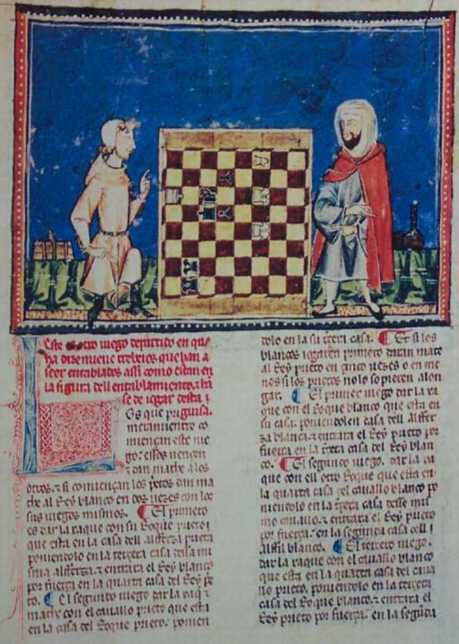
The Book of Games (Libro de los juegos), f°60v
Public domain
Image at URL :
http://games.rengeekcentral.com/gifs/F60V.jpg
(30/03/2015)
The game of chess is an example of the transmitting role of the Arab-Muslim world. Originally from India, the game arrived in Persia before spreading in the Arab-Muslim world after the Sassanid conquest. It arrived in Europe probably through Spain and had an immediate success. The Book of Games (Libro de los juegos) was commissioned by King Alfonso X of Castile (1252-1284) and completed in the scriptorium of Toledo in 1283. It contains 100 chess problems, thus explaining why we can see the image of an exchequer. The shown players reveal the great social and religious diversity of the populations living in Spain at the time. Each group is distinguished through its own style of dress.
A Jew and a Muslim playing a game of chess
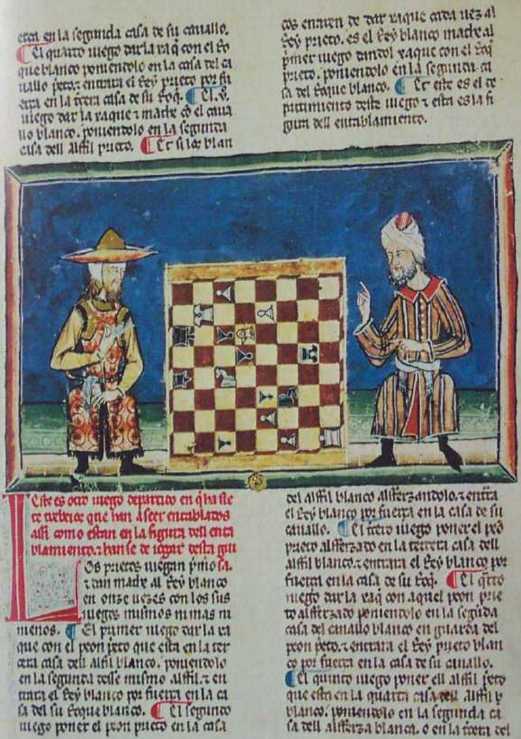
The Book of Games (Libro de los juegos), f°63v
Public domain
Image at URL :
http://games.rengeekcentral.com/gifs/F63R.jpg
(30/03/2015)
The game of chess is an example of the transmitting role of the Arab-Muslim world. Originally from India, the game arrived in Persia before spreading in the Arab-Muslim world after the Sassanid conquest. It arrived in Europe probably through Spain and had an immediate success. The Book of Games (Libro de los juegos) was commissioned by King Alfonso X of Castile (1252-1284) and completed in the scriptorium of Toledo in 1283. It contains 100 chess problems, thus explaining why we can see the image of an exchequer. The shown players reveal the great social and religious diversity of the populations living in Spain at the time. Each group is distinguished through its own style of dress.
A Christian and a Muslim playing a game of chess under a tents
The game of chess is an example of the transmitting role of the Arab-Muslim world. Originally from India, the game arrived in Persia before spreading in the Arab-Muslim world after the Sassanid conquest. It arrived in Europe probably through Spain and had an immediate success. The Book of Games (Libro de los juegos) was commissioned by King Alfonso X of Castile (1252-1284) and completed in the scriptorium of Toledo in 1283. It contains 100 chess problems, thus explaining why we can see the image of an exchequer. The shown players reveal the great social and religious diversity of the populations living in Spain at the time. Each group is distinguished through its own style of dress.
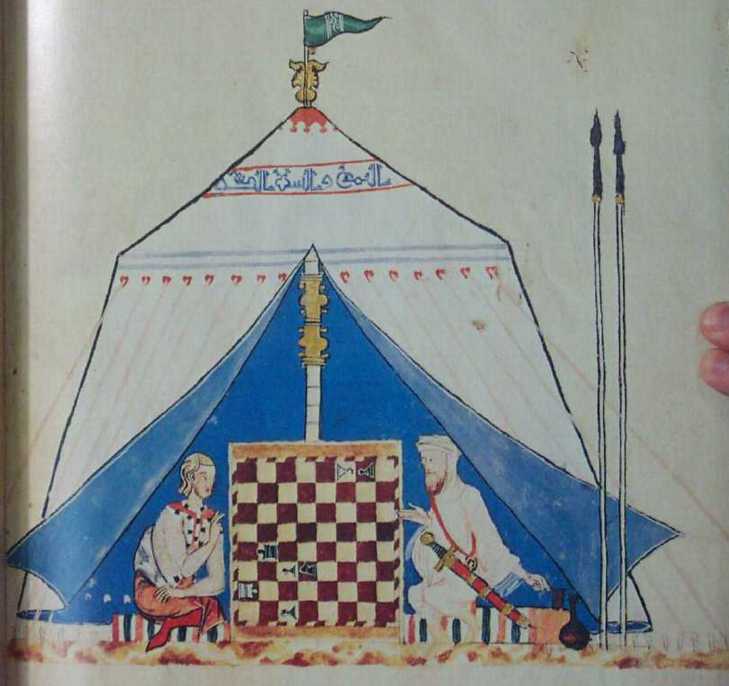
The Book of Games (Libro de los juegos), f°64r
Public domain
Image at URL :
http://games.rengeekcentral.com/gifs/F64R.jpg
(30/03/2015)
Averroes conversing with Porphyry
Ibn Rushd (1126-1198) was one of the greatest scholars in Al-Andalus. He was the author of not only scientific works (mathematics, astronomy and medicine), but also Islamic law. He was the qadi (judge) of Seville in 1160 and was part of the Maliki school [see Islam I module, section 7]. His philosophical works, in particular his important commentaries on Aristotle, had considerable influence in the West in the next century. He believed that philosophy was not incompatible with the teachings of Islam. But in doing so, he exposed himself to the criticism by the Asharite school, which, with the cover of the Almohades caliphs, rejected this approach because of its rationalism, thus dismissing Ibn Rushd in 1197. His work, suspected of heresy, did not achieve posterity in the Muslim world. However, his work was accessible in the Christian world through Jewish translators who transcribed his name as Aben Roys, hence the Latin form Averroes. In this image Averroes is shown conversing (in Latin) with the Greek philosopher Porphyry of Tyr (234 – 305). This representation highlights his role as someone who made connections between ancient and medieval, and Arab-Muslim and western knowledge.
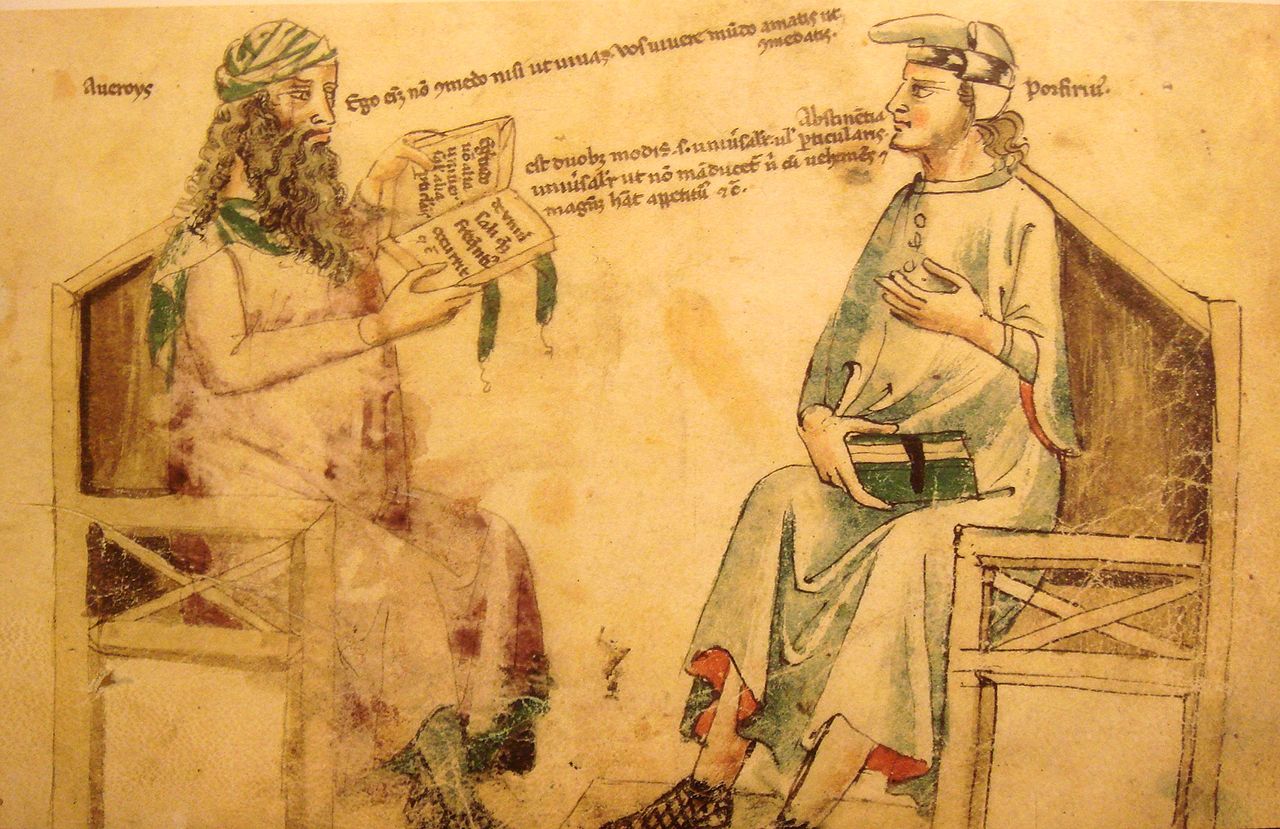
Monfredo de Monte Imperialis, Liber de herbis (14th c.).
Wikimedia Commons. Usable under the conditions of the GNU Free Documentation License
Public domain
Image under URL: http://commons.wikimedia.org/wiki/File:AverroesAndPorphyry.JPG
(30/03/2015)
A cantor reading the story of Passover in a synagogue in Al-Andalus
The image is from a 14th century manuscript and remind us how religious minorities, and more particularly the Jewish community, benefitted from freedom of religion under the boundaries of the dhimma. This tolerance favoured a flourishing of Jewish culture in Spain.
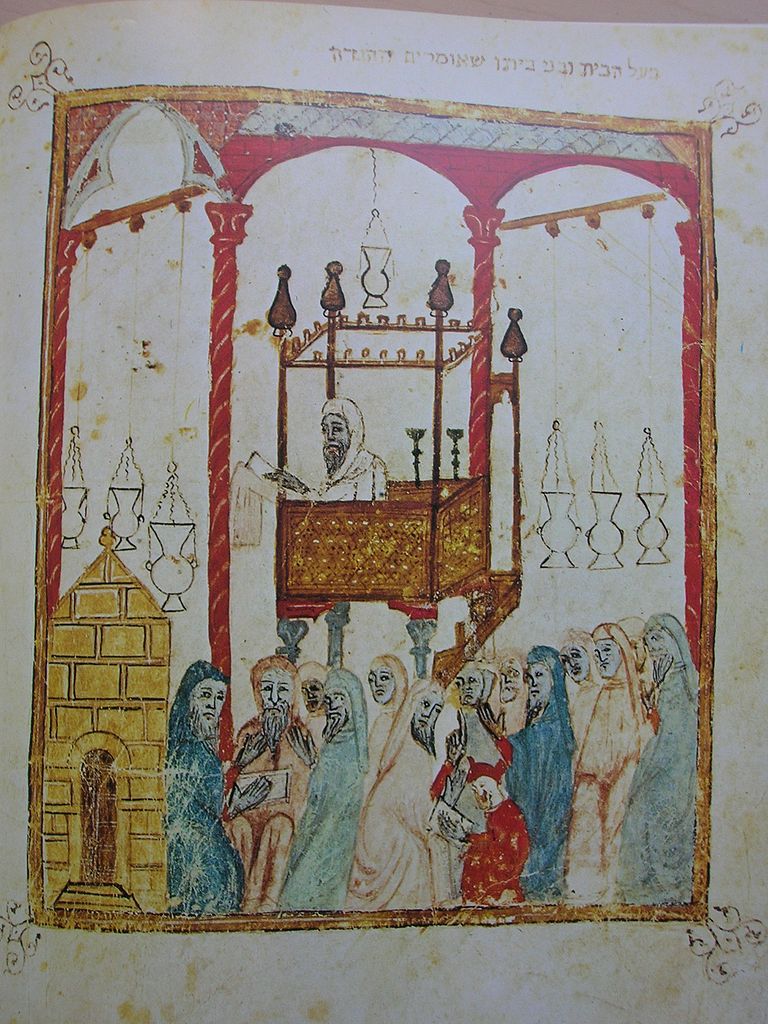
Wikimedia Commons. Usable under the conditions of the GNU Free Documentation License
Public domain
Image under URL: http://commons.wikimedia.org/wiki/File:Spanishhaggadah.jpg
(30/03/2015)
The mosque-cathedral of Cordoba
The mosque-cathedral of Cordoba is an example of the ways in which Christian and Muslim influences were able to mix. During the Visigothic period, it was the Church of Saint-Vincent. After the Muslim conquest, the building was divided in two: one section was turned into a mosque, the other was reserved for Christian worship. After he settled in Spain, Abd al-Rahman I (756-788) decided to build a mosque that could rival those in the Abbasid world so purchased the Christian section. The works started in 784. His successors expanded the mosque, which took its final form in 987. Note that the mihrab is oddly, turned to the south. In 1236, Cordoba was conquered by Castile. The centre of the mosque was converted to a church, and then to a cathedral. In the 16th century, the Canons built a cathedral that was more fitting to the norms of Catholic architecture and looked as if it was built into the mosque.
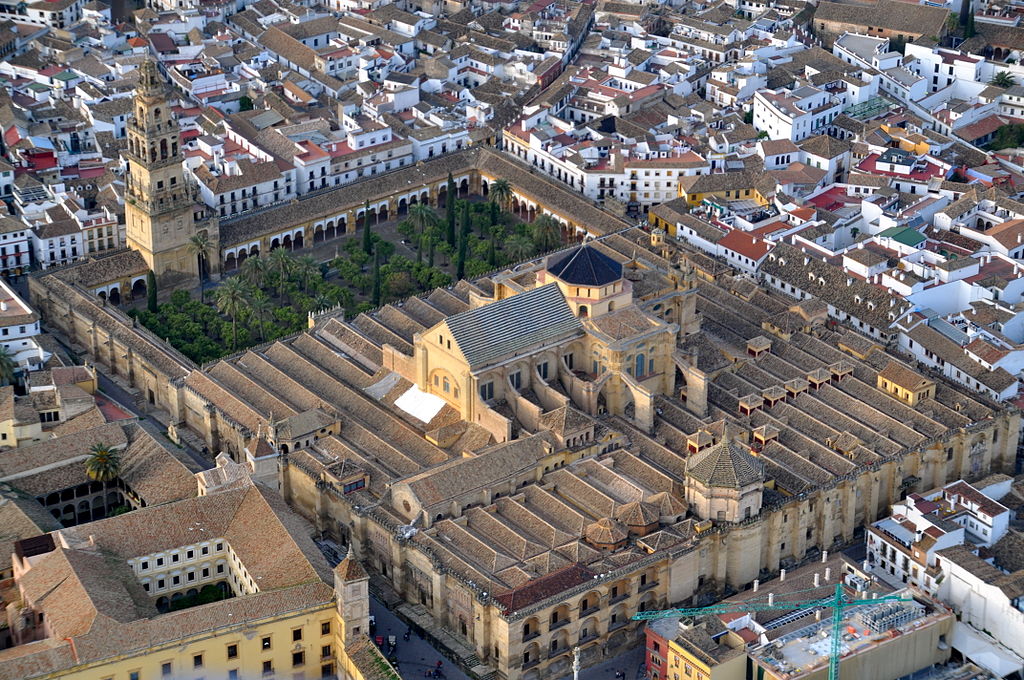
Photo by Toni Castillo Quero.
Wikimedia Commons. Usable under the conditions:
of the GNU Free Documentation License
Licensed under the Creative Commons Attribution-Share Alike 2.0 generic
Image under URL:
http://commons.wikimedia.org/wiki/File:Mezquita_de...
(30/03/2015)






